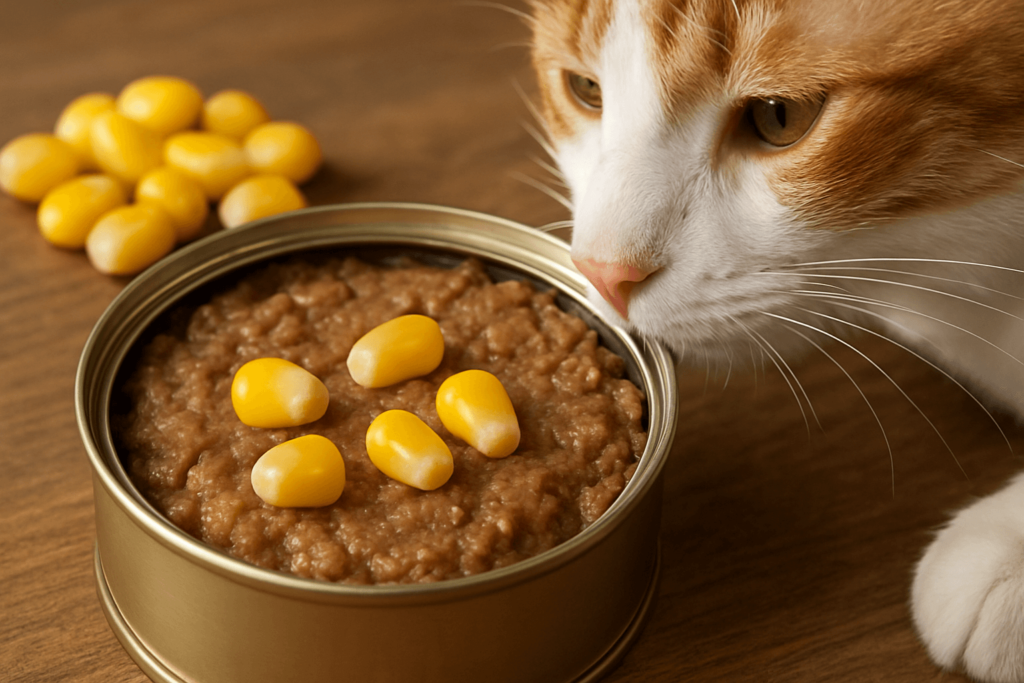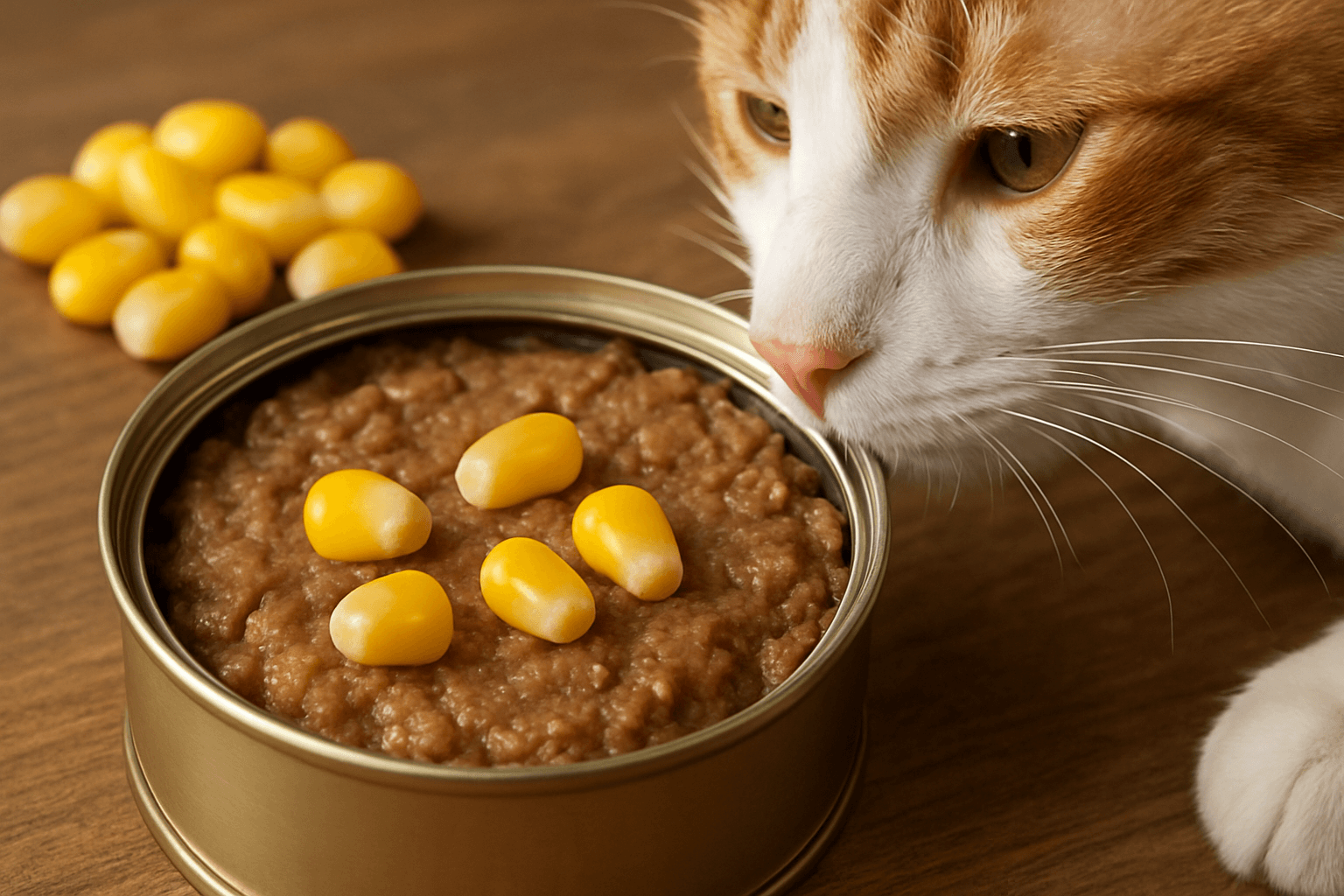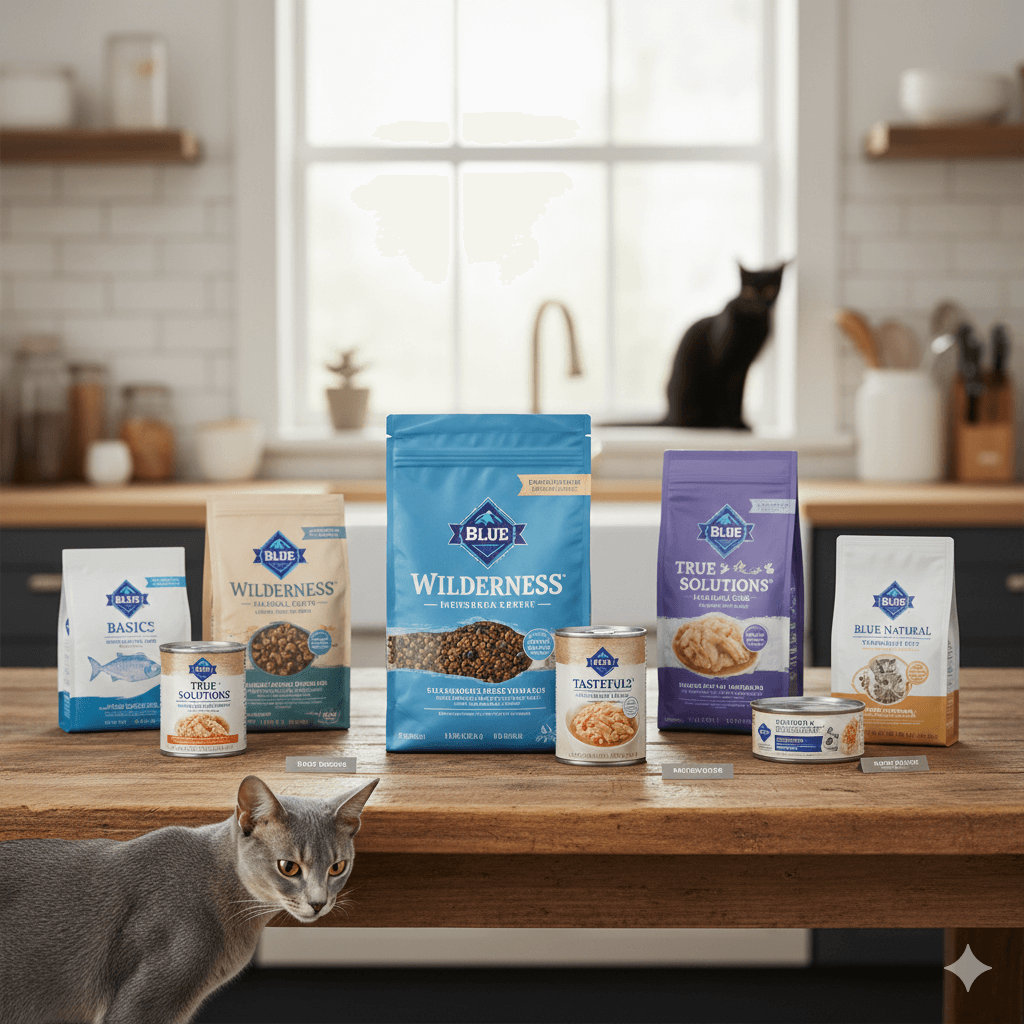Corn in Cat Food: What You Need to Know
When it comes to choosing the right food for your feline friend, the ingredients list can be a maze of unfamiliar terms and conflicting opinions. One ingredient that often sparks debate among cat owners is corn. Is corn in cat food beneficial, or should it be avoided altogether? While some argue that corn provides essential nutrients, others claim it’s nothing more than a filler with little nutritional value. In this blog post, we’ll explore the role of corn in cat food, its potential benefits and drawbacks, and how to make informed decisions about your cat’s diet. By the end, you’ll have a clearer understanding of whether corn deserves a place in your cat’s bowl.
The Role of Corn in Cat Food
Corn is a common ingredient in many commercial cat foods, but its purpose and nutritional value are often misunderstood. Understanding why manufacturers include corn can help you evaluate its role in your cat’s diet.
Source of Carbohydrates:
Corn provides carbohydrates, which serve as an energy source for cats, though they don’t require high levels of carbs in their diet.Binder and Texture Enhancer:
Corn is often used as a binder to hold kibble together, improving texture and making dry food easier to produce.Affordable Ingredient:
Corn is a cost-effective ingredient, helping manufacturers keep prices lower for consumers without compromising shelf stability.Nutrient Contribution:
When processed correctly, corn can contribute small amounts of protein, fiber, and essential fatty acids to a cat’s diet.Controversy Over Fillers:
Critics argue that corn is used primarily as a filler, adding bulk without significant nutritional benefits for cats.
While corn has practical uses in cat food production, its inclusion depends on the overall formulation and quality of the product.

Potential Benefits of Corn in Cat Food
Despite the controversies surrounding corn, there are some potential advantages to its inclusion in cat food when used appropriately. Here’s a closer look at how corn might benefit your cat’s diet.
Energy Source for Active Cats:
The carbohydrates in corn can provide quick energy for highly active or working cats, supporting their daily activity levels.Improved Digestibility (When Cooked):
Properly processed corn is more digestible and can contribute fiber, aiding in healthy digestion and regular bowel movements.Balanced Nutrient Profile:
Corn contains trace amounts of vitamins like B-complex and minerals such as magnesium, which can complement a balanced diet.Allergen Status (Rare Cases):
Corn allergies in cats are relatively uncommon compared to other ingredients like chicken or fish, making it a less frequent allergen.Support for Weight Management:
In controlled amounts, corn can help maintain a calorie balance, preventing excessive weight gain in sedentary cats.
While these benefits exist, they depend heavily on the quality and quantity of corn used in the food.
Check this guide 👉How Long Does Cat Food Last in the Fridge? Best 7 Tips!
Check this guide 👉Understanding Cat Food Macros: Best 7 Expert Tips!
Check this guide 👉Diabetic Cat Food: Best 7 Expert Tips!
Advantages of Corn in Cat Food | Disadvantages of Corn in Cat Food |
|---|---|
Provides carbohydrates for energy | Often considered a low-value filler |
Enhances kibble texture and binding | Can cause digestive issues in some cats |
Affordable ingredient for producers | May lead to nutrient imbalances |
Rarely triggers food allergies | Not species-appropriate for obligate carnivores |
Adds fiber for digestive health | Overuse may reduce meat-based protein content |
Drawbacks of Corn in Cat Food
While corn has its uses, there are valid concerns about its presence in cat food, especially when it’s overused or improperly processed. Here’s what you need to know about the potential downsides.
Low Biological Value for Cats:
As obligate carnivores, cats thrive on animal-based proteins. Corn offers limited biological value compared to meat-based ingredients.Risk of Digestive Issues:
Some cats may struggle to digest corn, leading to gastrointestinal upset, gas, or diarrhea.Overemphasis on Fillers:
Excessive use of corn can dilute the nutritional quality of cat food, prioritizing cost savings over health benefits.Potential for Contaminants:
Poor-quality corn may contain mycotoxins or pesticides, posing health risks if not sourced responsibly.Not Species-Appropriate Nutrition:
Cats evolved to consume prey-based diets, and corn doesn’t align with their natural dietary needs.
Understanding these drawbacks helps you assess whether corn-containing cat food is suitable for your pet.
How to Choose Cat Food with or Without Corn
Selecting the right cat food involves careful consideration of ingredients, including whether corn fits into your cat’s dietary needs. Here are some tips to guide your decision-making process.
Check the Ingredients List:
Look for corn listed after primary protein sources, ensuring it doesn’t dominate the formula.Prioritize High-Quality Proteins:
Opt for cat foods where meat-based proteins like chicken, turkey, or fish are the first ingredients.Avoid Artificial Additives:
Corn syrup or derivatives like corn gluten meal can indicate lower-quality formulations. Steer clear of these additives.Consult Your Veterinarian:
If you’re unsure about whether corn suits your cat’s specific health needs, seek advice from a trusted veterinarian.Consider Grain-Free Options:
For cats with sensitivities or allergies, grain-free foods may offer a viable alternative to corn-containing formulas.
By evaluating these factors, you can find a cat food that aligns with your pet’s nutritional requirements and preferences.
Common Misconceptions About Corn in Cat Food
There are several misconceptions about corn in cat food that can lead to confusion among pet owners. Clearing up these myths helps you make more informed choices.
“Corn Has No Nutritional Value for Cats”:
While corn isn’t a primary source of nutrition, it does contain some fiber, vitamins, and minerals that can contribute to a balanced diet.“All Corn in Cat Food Is Low Quality”:
The quality of corn varies; responsibly sourced and processed corn can be safe and digestible for most cats.“Corn Causes Allergies in Most Cats”:
Corn allergies are rare in cats compared to other common allergens like beef or dairy.“Grain-Free Diets Are Always Better”:
Grain-free doesn’t mean healthier—it simply replaces grains with other ingredients, which may not always be ideal for cats.“Corn Is the Main Cause of Obesity in Cats”:
Obesity stems from overfeeding and lack of exercise—not solely from corn or any single ingredient.
Understanding these misconceptions allows you to approach the topic of corn in cat food with greater clarity and confidence.
Alternatives to Corn in Cat Food
If you decide to avoid corn in your cat’s diet, there are plenty of alternatives that can provide similar benefits without the potential drawbacks.
Sweet Potatoes:
A highly digestible carbohydrate source, sweet potatoes offer fiber and nutrients while being gentler on sensitive stomachs.Peas:
Peas provide protein, fiber, and vitamins, making them a nutritious substitute for corn in many recipes.Lentils:
Rich in plant-based protein and fiber, lentils can enhance the nutritional profile of cat food without relying on grains.Chickpeas:
Chickpeas are another legume option that adds texture and nutrients while avoiding common grain-related concerns.Tapioca:
Tapioca serves as a binder and carbohydrate source, offering a hypoallergenic alternative to corn.
These alternatives provide variety and flexibility for crafting a diet tailored to your cat’s needs.
Tips for Transitioning to a New Diet
Switching your cat’s food requires patience and care to avoid upsetting their digestive system. Follow these tips to ensure a smooth transition.
Introduce Gradually:
Mix small amounts of the new food with the old, gradually increasing the proportion over 7-10 days.Monitor for Reactions:
Watch for signs of digestive distress, such as vomiting or diarrhea, and slow down the transition if needed.Maintain Hydration:
Ensure your cat has access to fresh water throughout the transition period to support digestion.Stick to High-Quality Brands:
Choose reputable brands with transparent ingredient lists to minimize the risk of adverse reactions.Be Patient with Picky Eaters:
Some cats take time to adjust to new flavors or textures. Offer encouragement and consistency during the process.
A thoughtful approach to transitioning ensures your cat adapts comfortably to their new diet.
Frequently Asked Questions About Corn in Cat Food
Is corn harmful to cats?
Corn isn’t inherently harmful, but it may cause issues if overused or poorly processed. Moderation is key.
Can cats digest corn easily?
Cats can digest properly processed corn, but individual tolerance varies. Some cats may experience digestive discomfort.
Why do manufacturers use corn in cat food?
Corn is affordable, improves texture, and adds bulk, making it a practical choice for many commercial brands.
Should I avoid cat food with corn entirely?
Not necessarily. Focus on the overall quality of the food and ensure corn isn’t the primary ingredient.
Are grain-free cat foods better than those with corn?
Grain-free foods aren’t automatically superior, but they may suit cats with sensitivities or allergies to grains like corn.
Making Informed Choices About Corn in Cat Food
Corn in cat food remains a topic of debate, with valid arguments on both sides. While it offers certain benefits, such as providing energy and improving texture, its nutritional value for obligate carnivores is limited. Ultimately, the decision to include or exclude corn from your cat’s diet depends on their individual needs, preferences, and health status. By carefully reading labels, consulting professionals, and prioritizing high-quality ingredients, you can ensure your cat enjoys a balanced and nutritious diet. Remember, every cat is unique—what works for one may not work for another. Trust your instincts and prioritize your pet’s well-being above all else.
Is Royal Canin Good Cat Food? A Deep Dive into Tailored Feline Nutrition Choosing the right food for your feline friend is …
Dwarf Cat Lifespan: Best 7 Expert Tips! Discover how to ensure a long, healthy, and happy life for your short-legged feline companion.
Blue Buffalo Cat Food: Best 7 Expert Tips! Discover how to choose the right formula, feeding strategies, and nutritional benefits for your feline friend.
Canned Pumpkin for Cat Diarrhea: Best 7 Expert Tips! Natural remedy to firm stools, soothe upset bellies, and support gut health safely.




